Delta Hausdorff Dimension
Robert P. Munafo, 2010 Sep 7.
The box-counting dimension for a given neighborhood of a point, which is considered to be a term in a series, the limit of which would be the Hausdorff dimension.
It gives a rough qualitative estimate of the "apparent" Hausdorff dimension of an image at a given pixel resolution, and is computed by the following formula:
Ddh = log2(POP2s / POPs)
Here Ddh represents delta Hausdorff dimension, POP2s is the population (pixel count) on a pixel grid of size 2s, and POPs is the population on a grid of size s. Both pixel grids cover the same area (as expressed in real and imaginary coordinates) but the second grid has twice as many pixels (sample-points).
If P is a point in the Mandelbrot Set, Ddh for a neighborhood of P is constrained to be in the range containing the Hausdorff dimensions of the Julia Sets for all points within the neighborhood. There are points in the Mandelbrot Set for which the Julia Set has a Hausdorff dimension "arbitrarily close" to 2.0. Since all neighborhoods of P contain embedded copies of the Mandelbrot Set, the upper bound of the range for any neighborhood is 2.0. As you zoom in, the neighborhood gets smaller and the lower bound of the range can go up. However the lower bound does not always go up. Also, the Ddh of the neighborhood can go up or down as you zoom in.
This is all sort of abstract, so I'll give some examples. To appreciate what's going on, compare the images to the numbers below. The number gives the fractal dimension of the image by the box-counting method; it can be anything from 1.00 to 2.00. The images were created using the distance estimator method.
In the first example, we're zooming in to the tip of a filament and Ddh goes down and reaches an asymptote quickly:
| coordinates | ||||
| 0.00000 +1.00000i |
radius 0.3 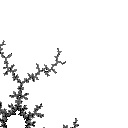 Ddh = 1.540 |
radius 0.1 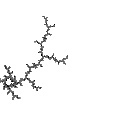 Ddh = 1.349 |
radius 0.03 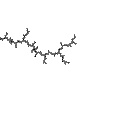 Ddh = 1.255 |
radius 0.01 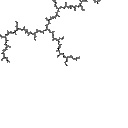 Ddh = 1.238 |
radius 0.003 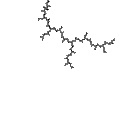 Ddh = 1.278 |
radius 0.001 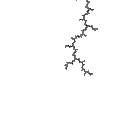 Ddh = 1.248 |
radius 0.0003 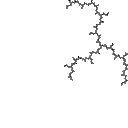 Ddh = 1.278 |
radius 0.0001 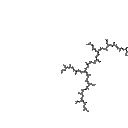 Ddh = 1.257 |
In the second example Ddh goes up steadily as we zoom in, which is the most common behavior for most points that people usually zoom in to:
| coordinates | ||||
| -1.74856 +0.00075i |
radius 0.3 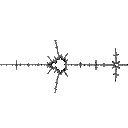 Ddh = 1.275 |
radius 0.1 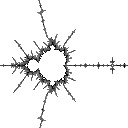 Ddh = 1.389 |
radius 0.03 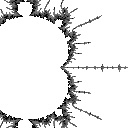 Ddh = 1.547 |
radius 0.01 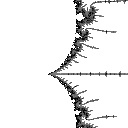 Ddh = 1.548 |
radius 0.003 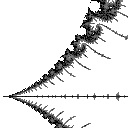 Ddh = 1.594 |
radius 0.001 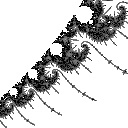 Ddh = 1.663 |
radius 0.0003 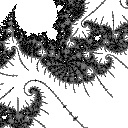 Ddh = 1.706 |
radius 0.0001 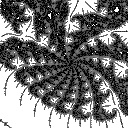 Ddh = 1.765 |
In the third example Ddh goes up and then goes back down:
| coordinates | |||||
| -1.74831 | +0.00046i |
radius 0.3 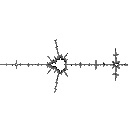 Ddh = 1.361 |
radius 0.1 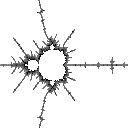 Ddh = 1.400 |
radius 0.03 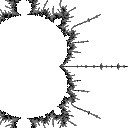 Ddh = 1.568 |
radius 0.01 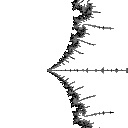 Ddh = 1.602 |
radius 0.003 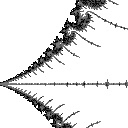 Ddh = 1.583 |
radius 0.001 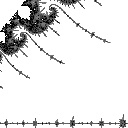 Ddh = 1.602 |
radius 0.0003 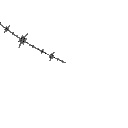 Ddh = 1.357 |
radius 0.0001 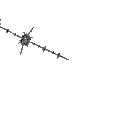 Ddh = 1.382 |
It can occur that Ddh goes up and down several or many times, but you have to be willing to zoom in a really long way to see this happen. One example is the point
-1.769 110 375 463 767 385 + 0.009 020 388 228 023 440 i
if you zoom in "all the way" on these coordinates you see this:
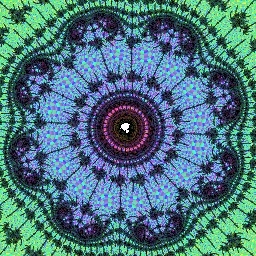
the Munafo minibrot
References
The Wikipedia page on box-counting dimension is here: Minkowski-Bouligand dimension
From the Mandelbrot Set Glossary and Encyclopedia, by Robert Munafo, (c) 1987-2024.
Mu-ency main page — index — recent changes — DEMZ
This page was written in the "embarrassingly readable" markup language RHTF, and was last updated on 2023 Jul 03.
 s.27
s.27